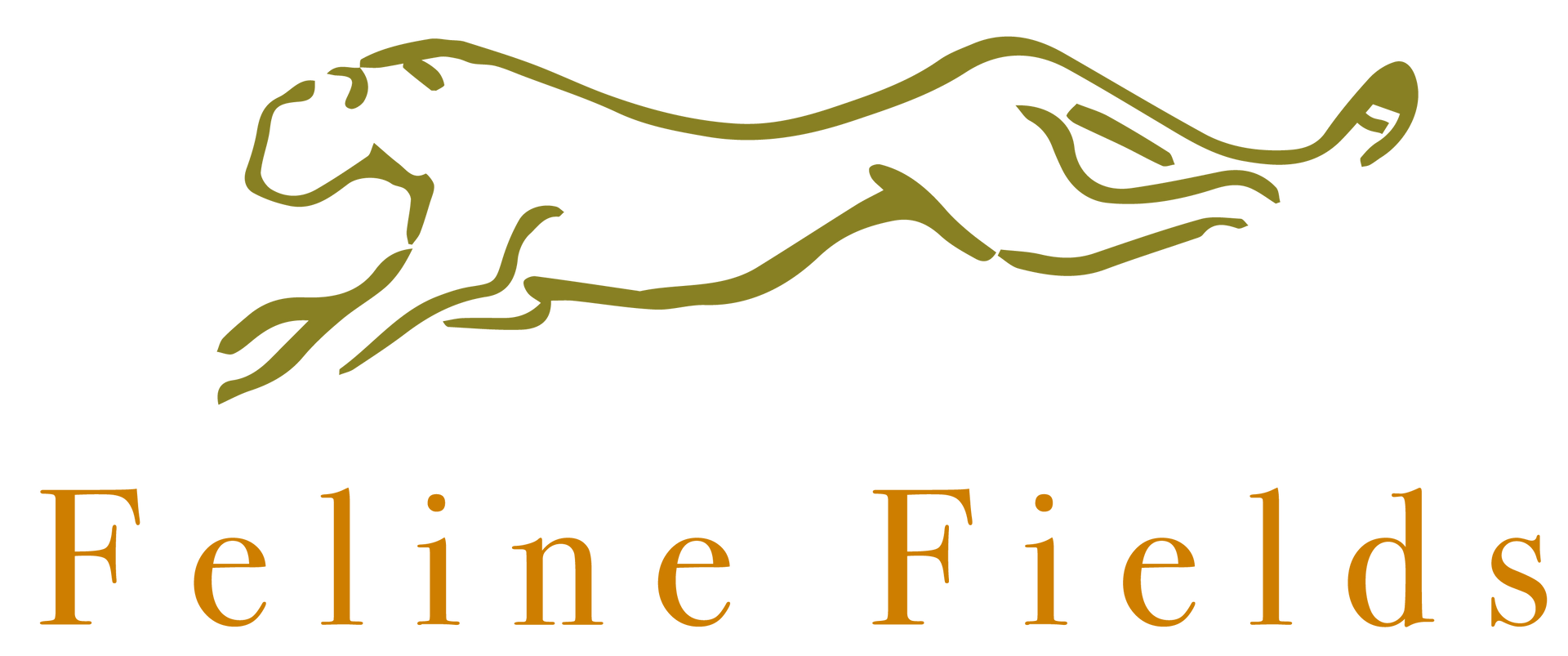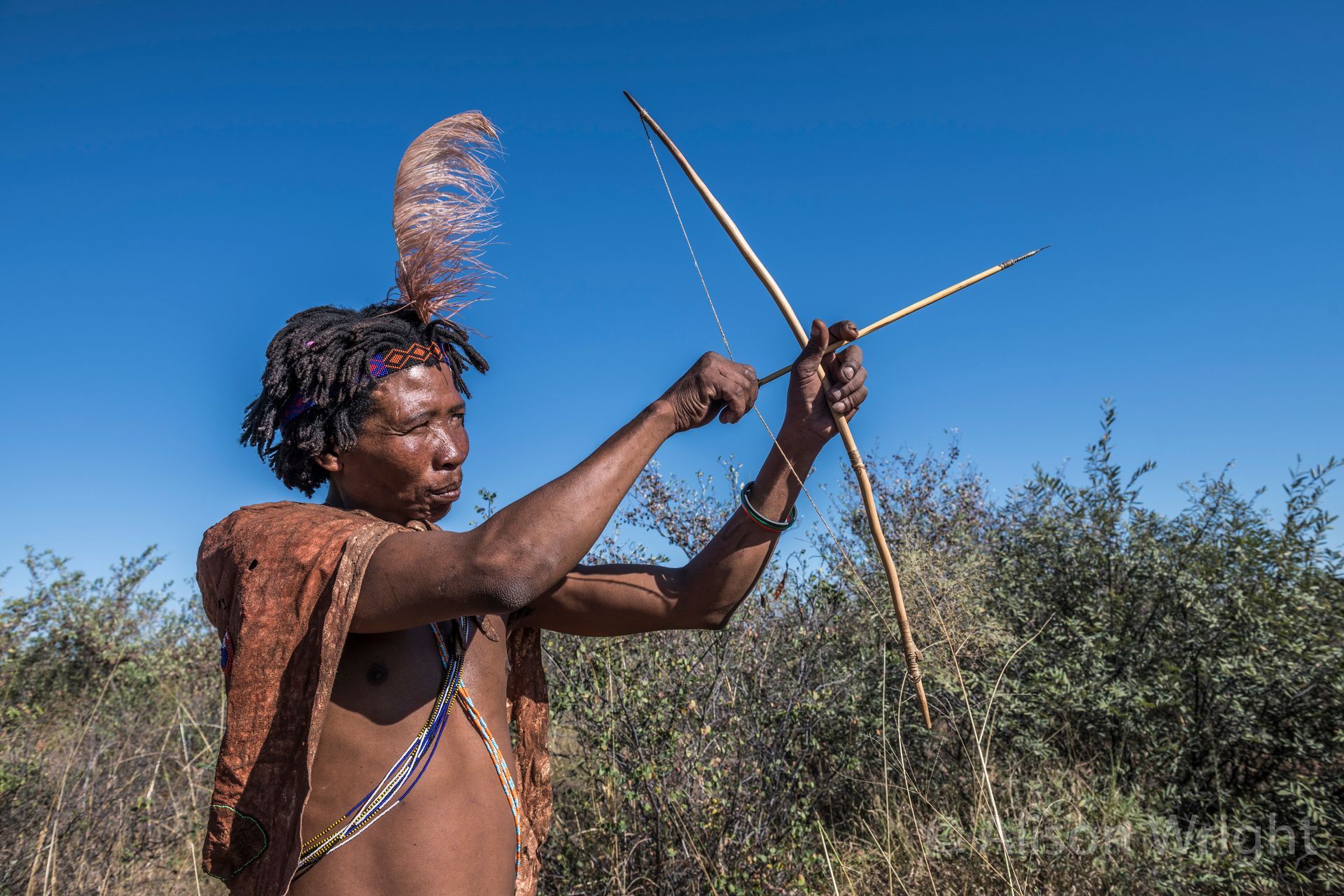The history of our San Bushmen
Discover more about the Ju/'hoansi people
The San Bushmen are a living link to humanity's ancient past, embodying a way of life that predates agriculture and settled civilisations. With an estimated remaining population of around 130,000 spread across six countries in Southern Africa, the San are among the last remaining hunter-gatherer societies on Planet Earth. The Ju/'hoansi of the north-western Kalahari are among the most resilient of these widespread communities, and key to our ethos at Feline Fields Lodge...
The story of the Ju/'hoansi is one of profound historical significance and contemporary challenges. Their ancient traditions, unique languages characterised by distinctive click sounds, and egalitarian social structures are facing grave threats. Disenfranchisement, the impacts of climate change, and a widespread lack of understanding of their cultural practices jeopardise the very fabric of their existence.
In a world where the majority has transitioned from a hunter-gatherer lifestyle to settled agriculture and beyond, the Ju/'hoansi stand as a living testament to humanity's collective past. The contrast in numbers is stark: around 10,000 BC, the majority of the global population were hunters; by 1972, only 0.001% of the world's population were still hunters. Today, as the global population approaches 8-billion, the number of practicing hunters is even more minuscule.
Ancient roots
The term "San" serves as a collective label for several indigenous ethnic groups in Southern Africa, including the ǃKung, |Gui, Ju/'hoansi, and Naro people.
Archaeologists posit that the San Bushmen's hunter-gatherer culture, to which the Ju/'hoansi belong, dates back approximately 20,000 years. Some evidence even suggests association with the Early Later Stone Age, making the Ju/'hoansi descendants of Southern Africa's oldest inhabitants and custodians of one of Earth's oldest cultures.
The Ju/'hoansi remain guardians of an ancient way of life, echoing the collective journey of humanity. As they navigate the challenges of the modern world, the story of the Ju/'hoansi is a call for recognition, understanding, and preservation—a story that belongs to us all, reminding us of our shared history and the importance of cultural diversity in the tapestry of human experience.
Their home in Botswana's north-western Kalahari is crucial to understanding their resilience. The relative isolation provided by the Kalahari has nurtured their foraging culture and shielded them from too many external influences. Their lifestyle, characterised by nomadic hunting and gathering, is a delicate dance with the challenging arid environment.
Key aspects of the Ju/'hoansi way of life are the rituals that underscore the significance of community bonds. The trance dance where community members enter altered states of consciousness, is just one example of the spiritual and cultural practices that define their identity.
Facing Modern Challenges
The historical narrative of the Ju/'hoansi is not without challenges. The colonial and post-colonial eras brought encroachment on their lands and forced assimilation attempts, leaving lasting impacts on their communities. Efforts to balance conservation goals with the rights of indigenous peoples have added complexity to their struggle, particularly in a changing world.
Efforts are under way to preserve and revitalise Ju/'hoansi culture. Initiatives include documenting their languages, traditions, and environmental knowledge. Many of our local community members maintain a traditional lifestyle and are happy to share their culture with our guests. It's one of the ways that Feline Fields is helping to keep the Ju/'hoansi's important and fascinating traditions and belief system alive and relevant.
Harmony with nature
The Dobe area, where the Ju/'hoansi predominantly reside, is a mosaic of waterholes, dry river valleys, vast flat savannah and low hills. This environment sustains a diverse array of wildlife, forming the foundation of the Ju/'hoansi's hunting and gathering lifestyle. The challenges they face include competition for prey with major predator species like lions and leopards, as well as climate change and human expansion.
Ungulates, such as kudu, wildebeest, and gemsbok, are among the main game animals for the Ju/'hoansi, while various mammals, birds, and reptiles contribute to their diet. The ostrich, in particular, holds cultural significance; its eggs are prized, not only for consumption but also for practical uses like water canteens and bead-making.
During your stay at Feline Fields Lodge we will be introducing you to our local Ju/'hoansi community members so that you can learn more about these wonderful people and ambassadors of Africa's First People.






